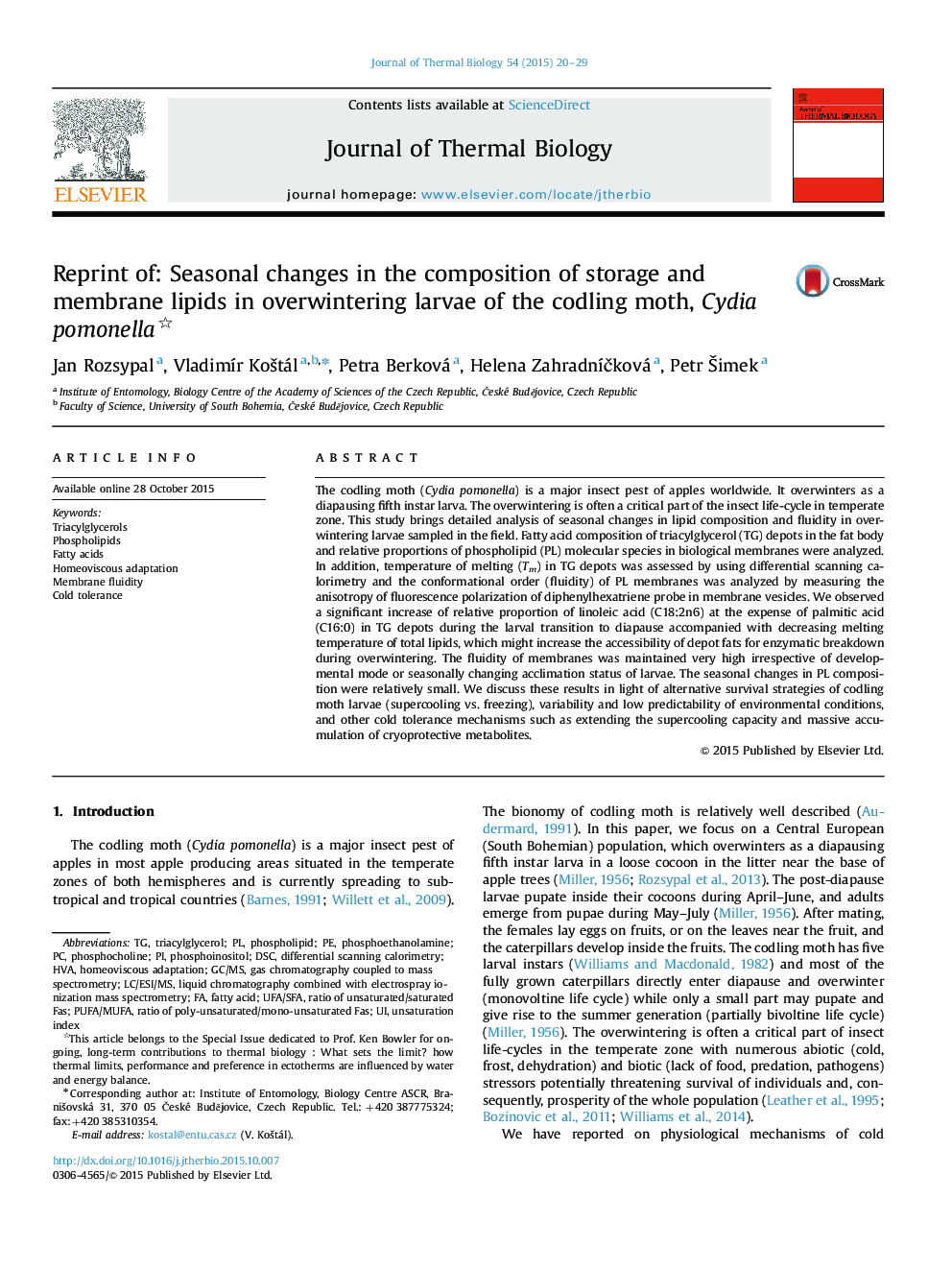| کد مقاله | کد نشریه | سال انتشار | مقاله انگلیسی | نسخه تمام متن |
|---|---|---|---|---|
| 2842701 | 1571092 | 2015 | 10 صفحه PDF | دانلود رایگان |

• Larvae of C. pomonella survive winter either in supercooled or in frozen state.
• The fatty acyl desaturation increases in depot fat during winter.
• The proportion of linoleate increases while proportion of palmitate decreases.
• The seasonal changes in PL composition are relatively small.
• The fluidity of membranes is maintained constitutively very high.
The codling moth (Cydia pomonella) is a major insect pest of apples worldwide. It overwinters as a diapausing fifth instar larva. The overwintering is often a critical part of the insect life-cycle in temperate zone. This study brings detailed analysis of seasonal changes in lipid composition and fluidity in overwintering larvae sampled in the field. Fatty acid composition of triacylglycerol (TG) depots in the fat body and relative proportions of phospholipid (PL) molecular species in biological membranes were analyzed. In addition, temperature of melting (Tm) in TG depots was assessed by using differential scanning calorimetry and the conformational order (fluidity) of PL membranes was analyzed by measuring the anisotropy of fluorescence polarization of diphenylhexatriene probe in membrane vesicles. We observed a significant increase of relative proportion of linoleic acid (C18:2n6) at the expense of palmitic acid (C16:0) in TG depots during the larval transition to diapause accompanied with decreasing melting temperature of total lipids, which might increase the accessibility of depot fats for enzymatic breakdown during overwintering. The fluidity of membranes was maintained very high irrespective of developmental mode or seasonally changing acclimation status of larvae. The seasonal changes in PL composition were relatively small. We discuss these results in light of alternative survival strategies of codling moth larvae (supercooling vs. freezing), variability and low predictability of environmental conditions, and other cold tolerance mechanisms such as extending the supercooling capacity and massive accumulation of cryoprotective metabolites.
Journal: Journal of Thermal Biology - Volume 54, December 2015, Pages 20–29